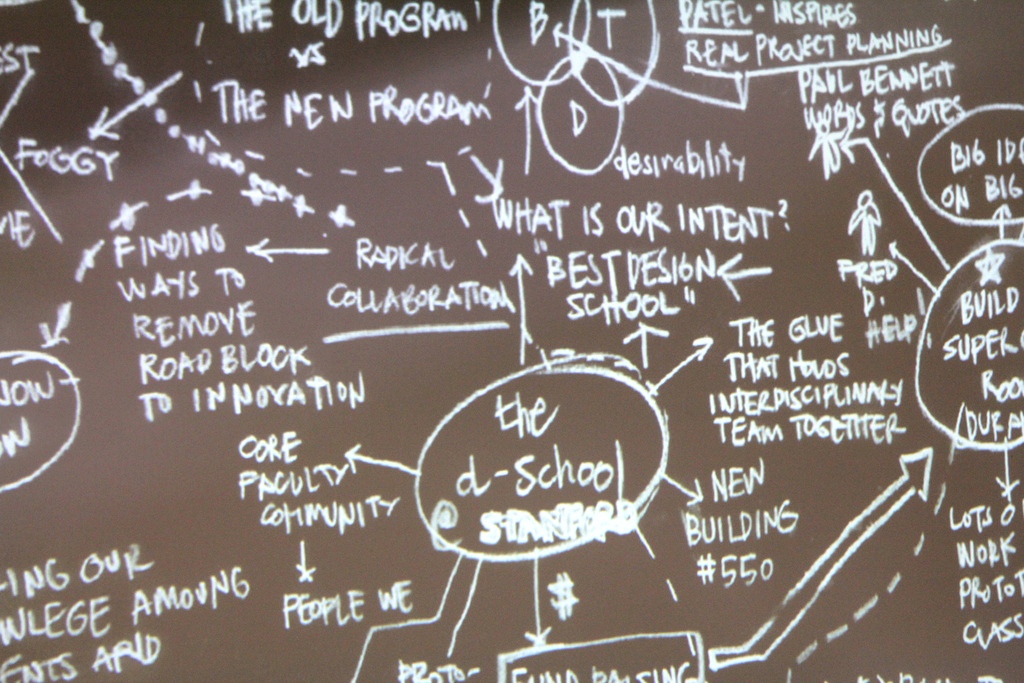For sure, the Design Thinking Studio is one of the most interesting classes I will ever have the opportunity to attend during my studies. From both the in-class activities and the assignments I have done so far, I have learned that classes should be considered and set so that the students have to listen less, and do more. In “regular” courses in business schools, the student is most of the time passive. This is, basically, the contrary in the Design Studio, and the projects we do are not only PowerPoint presentations.
The Business Model Canvas was something new to me, and so was the experience of working with a CEO. And getting familiar with the Business Canvas concept made me discover a new and completely different way to look at a business. Although I have done several internships in companies in the few past years, I have never gone that deep into a business understanding. When I first took a look at the Business Canvas, especially at the questions we were supposed to answer in each section, I told myself that it would be impossible to find everything we needed. Before that day, I would always consider a business from the perspective of a company making profits by meeting its customers’ demand someway, and that is used to advertising, has channels and whose activity has costs. But I would always see all this as one entity, and I had never considered looking at each section of the Canvas (Value Proposition, Customer Segment, Key Activities, Revenue Streams…) as different ones.
However, when I first had to work on Rain City Strategies startup and search for information about it, and when we met Colin, the company’s CEO, I realized that, finding this information by just looking at the business as a whole was much more difficult than breaking it down and explore its components one by one. I know that businesses can be really different one from another, and what I found the most interesting in this activity was to see which sections of the canvas Colin talked about and emphasized the most, which actually is a reflection of the way he sees his own business. What I have learned from this is that one has to create value where there is none, “invite those who are not invited”, take a human-centered approach, and not do something that does not make him/her earn money. This reminded me of a sentence in “Design Thinking” by Tim Brown: “find talent any way you can“, or Verganti’s: “we do not look at market needs. We make proposals to people”. When Colin was talking about his business, it was not only clear, but I really felt that his main aim was to help the Aboriginal Communities meet their need by helping them partner with companies.
And since Rain City Strategies is what Verganti calls a radical innovation (risky, but provides a long-term competitive advantage), it didn’t fit the Business Canvas very well. RCS business model was quite different from any other, and that’s why my partner and I struggled to find how to link all the canvas main sections in a logical and self-explanatory way. I personally think that this exercise would have been easier had we not work on it as a model (for two weeks) but only as a reference.
At first, and like many of my classmates, I couldn’t see the point in presenting to Colin his own business model and characteristics, which himself had explained to us before. Even when I realized that I had to give insights about it, I thought that we were going to rephrase what the CEO had just said. But, only after the presentation, I found out the importance of not only giving an insight or a feedback about the business, but going a step forward, that is to say giving the CEO new ideas, suggesting solutions to problems. And this is, once more, what Tim Brown refers to: sitting and observing the world that surrounds us, noticing what is wrong or what could be improved, and design-thinking about a solution to do, redo, repair or improve something.
I am looking forward to reading more about design, innovation and design-thinking, and above all, to challenging my own mind and thinking habits with exciting projects to work on.
